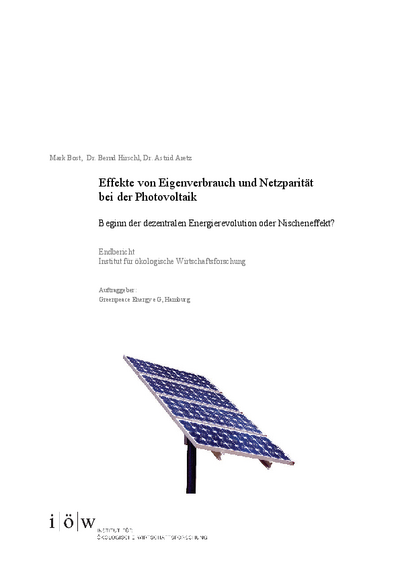Effects of self-consumption and grid parity of photovoltaic systems
Grid parity, self-consumption, and battery storage - these slogans dominate the current discussion about photovoltaics and feed-in-tariffs in Germany. But what does all this mean for the PV operators, the PV industry, the electricity prices and security of energy supplies?
These are some of the questions which are examined in the current study on behalf of Greenpeace Energy. Here are some of the answers:
1. Currently, households only use about 20% of the electricity produced in their PV plants. The rest is fed into the grid, because solar power generation and consumption fall apart over time.
2. This proportion can be increased to up to 40% by changing the electricity consumption behavior. The use of battery storage can increase this proportion to over 90%. The same applies to the self-sufficiency.
3. Grid parity is expected 2013/2014 and will encourage self-consumption.
4. In Germany, self-consumption is already promoted by the feed-in-tariff system. However, this system fails to promote the use of battery storage as well as to contribute to a significant financial relief of the citizens or for grid stabilization.
5. Storage and control technologies with smart grid integration can contribute significantly better to supply reliability. A funding mechanism for such systems would be useful, but does not yet exist.
Other aspects and backgrounds as well as the underlying methodology are described in the full study, which is free to download (German language).



